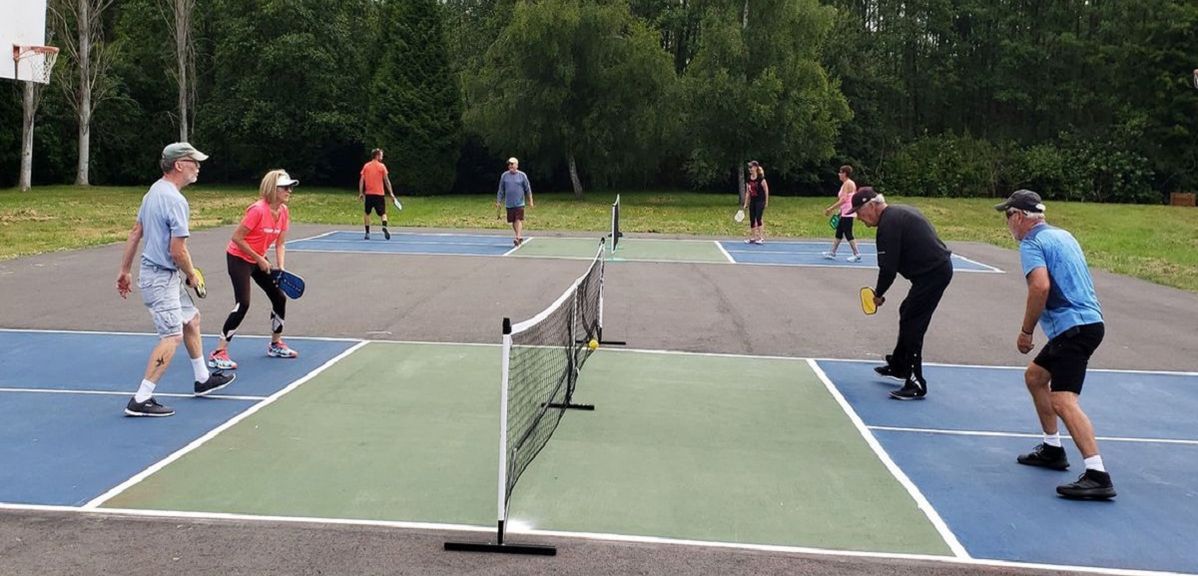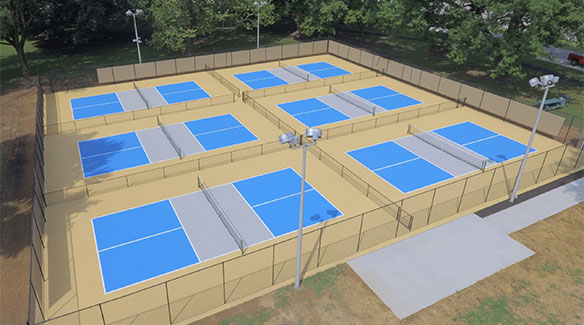Navigating Regulations for Pickleball Court Construction in Your Location
Building a pickleball court in your area calls for a nuanced understanding of different neighborhood regulations, including zoning legislations, building licenses, and safety requirements. Involving with neighborhood authorities and the community is crucial for guaranteeing compliance and cultivating support.
Understanding Local Zoning Regulations
When considering the building and construction of a pickleball court, recognizing local zoning legislations is crucial to making certain compliance and staying clear of potential lawful problems. Zoning guidelines determine just how land can be used and frequently include requirements pertaining to entertainment centers. These regulations can vary significantly by district, impacting factors such as court positioning, size, sound, and illumination degrees.
Before launching building and construction, it is necessary to consult the neighborhood zoning board or preparation division to identify the details guidelines that relate to your home. Specific zones might limit recreational activities, while others might need specific permits or adherence to certain guidelines. It is additionally crucial to take into consideration troubles, which determine exactly how far structures should be from residential property lines or other buildings.
Furthermore, exclusive advancements, such as homeowner organizations (HOAs), might impose their very own guidelines regarding the building and use pickleball courts. Understanding these guidelines can protect against expensive alterations or lawsuits down the line. Engaging with neighborhood stakeholders and community members can supply valuable understandings and foster assistance for your task, ensuring that it aligns with the area's requirements and expectations.
Getting Necessary Structure Allows
Exactly how does one browse the complexities of acquiring needed structure licenses for a pickleball court? The procedure begins with understanding local laws and demands stated by local authorities. Usually, you will certainly need to submit a thorough site strategy that lays out the proposed court dimensions, materials, and design. This strategy must abide by zoning regulations and any kind of specific regulations relating to recreational facilities.

Once permits are obtained, it is vital to abide by any type of inspection timetables and requirements throughout the construction stage. Maintaining communication with local authorities will certainly assist in a smoother authorization process and help stay clear of potential problems. By extensively preparing and recognizing the permitting landscape, you can effectively navigate the intricacies associated with creating a pickleball court while continuing to be certified with all local policies.

Assessing Environmental Effect
A thorough assessment of ecological effect is crucial when planning the construction of a pickleball court. This examination assists recognize potential effects on regional communities, water resources, and area aesthetics. Key aspects to consider include site option-- guaranteeing that the court is not constructed on ecologically delicate land, such as marshes or habitats for threatened types
Soil security and drain patterns must be evaluated to protect against disintegration and water merging, which can negatively affect bordering plant life and wildlife. In addition, the option of products is crucial; choosing lasting and environmentally friendly options decreases ecological damage.
The implementation of effective stormwater administration practices is an additional important aspect, as it helps mitigate runoff and sedimentation. Involving with regional ecological firms can give valuable understandings right into guidelines and best practices specific to your area.
Lastly, community input can be useful in comprehending any type of regional environmental issues and cultivating assistance for the job. By conducting a complete environmental effect analysis, stakeholders can make certain that pickleball court building lines up with sustainable methods and contributes positively to the area's ecological health and wellness.
Adhering To Safety And Security Specifications
Ensuring compliance with safety and security standards is critical for the successful construction and procedure of a pickleball court. Sticking to well established security guidelines lessens the danger of accidents and injuries, making sure a safe atmosphere for players.
Trick safety and security criteria consist of proper court dimensions, surface products, and lights requirements. The court must meet the official measurements of 20 feet large by 44 feet long for increases play, with suitable buffer areas to avoid injuries from errant rounds. Pickleball court construction. The surface ought to be constructed from non-slip products to enhance grip anonymous and minimize the likelihood of falls
In addition, lighting needs to be sufficient for evening play, supplying uniform illumination to avoid shadows that can impede presence. Local building ordinance may also dictate details demands for secure fencing and web elevation to make sure player safety and stop unauthorized accessibility to the court area.
Routine examinations and upkeep are important to copyright these criteria gradually. By prioritizing safety and security compliance, court owners not only safeguard players but also promote a favorable reputation within the area. This dedication to safety and security can encourage better involvement and satisfaction of the sporting activity, inevitably adding to its development and sustainability.

Engaging the Neighborhood in Planning
Neighborhood participation in the drawing board of pickleball court construction can dramatically boost the project's total success. Involving regional residents and stakeholders promotes a sense of possession and encourages collective decision-making, which can cause more comprehensive support for the campaign.
To properly include the community, coordinators need to initiate public meetings or workshops, providing a system for citizens to articulate their viewpoints and choices pertaining to location, design, and amenities. Studies and comments types can also be utilized to gather insights from a larger audience, guaranteeing that varied viewpoints are taken into consideration.
Additionally, forming a community consultatory board can help with continuous discussions and address issues throughout the planning procedure. This board can consist of agents from numerous demographics, such as regional institutions, leisure companies, and neighborhood watch, thus magnifying neighborhood representation.
Efficient communication is crucial; updates regarding the project should be regularly shared via e-newsletters, social media sites, or neighborhood bulletins. By prioritizing neighborhood engagement, planners can grow interest, mitigate potential opposition, and produce a pickleball center that truly reverberates with local worths and needs. This collaborative strategy not just enriches the project however also enhances area connections.
Conclusion
In verdict, navigating the intricacies of pickleball court building requires a detailed understanding of neighborhood policies, consisting of zoning regulations, building permits, and safety criteria. Carrying out ecological assessments is necessary to alleviate eco-friendly impact, while community involvement can enhance support for such tasks. By adhering to these standards and promoting collaboration, successful application of pickleball courts can be achieved, promoting entertainment possibilities and community well-being. Continued persistance in these areas will certainly make sure compliant and sustainable advancement.
Creating a pickleball court in your area needs a nuanced understanding of numerous regional guidelines, including zoning laws, structure authorizations, and safety standards.When thinking about the construction of a pickleball court, understanding neighborhood zoning regulations is essential to making sure conformity and avoiding possible lawful concerns. By completely preparing and understanding the permitting landscape, you can effectively browse the complexities entailed in creating a pickleball court while continuing to be compliant with all regional navigate to this site regulations.
In conclusion, browsing the complexities of pickleball court construction demands a detailed understanding of neighborhood laws, including zoning laws, structure licenses, and security requirements. By adhering to these standards and fostering cooperation, successful execution of pickleball courts can be accomplished, advertising entertainment this post opportunities and neighborhood well-being.